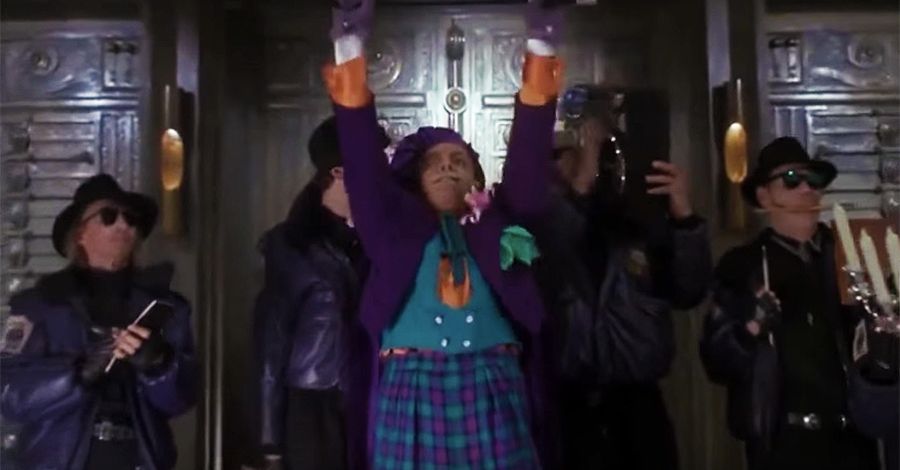Jack Nicholson was a whole new type of Joker. For the 20-plus years preceding Tim Burton's outrageously gothic "Batman" in 1989, Cesar Romero's brightly colored and cackling Clown Prince of Crime had been the default in the public's mind when they thought of Batman's most dangerous foe. Romero was tall, lanky, and a bit refined while still having the Joker's required element of mania. Nicholson was none of that. He was slightly shorter, a little rounder and possessed a drier, slower energy. Romero looked like the Joker's original inspiration, '20s actor Conrad Veidt, while Nicholson definitely did not. Jack was the madman from Stanley Kubrick's "The Shining," a character that was unquestionably terrifying but not exactly funny. Nicholson's Joker would be a totally different take on the character.
Legendary Artist Prince Passes Away at 57
The Joker's raid on the Gotham City Art Museum comes an hour into Burton's "Batman." At this point, we've already seen Jack Napier's swandive into a vat of chemicals, his trip to a back-alley plastic surgeon and his emergence as the Joker. We've heard him laugh and seen him in various dastardly dapper outfits. But it's an hour in -- with the patrons of the museum KO'd by purple gas, leaving shocked photojournalist Vicki Vale spared thanks to a strawberry-themed gas mask -- that we get to experience Jack Nicholson's specific version of the Joker unleashed.
And it's a version made possible by Prince.
"Gentlemen. Let's broaden our minds."
This scene is weird. The fact that it's in this "Batman," one created in almost direct contrast to the "Biff! Pow!" version seen in the '60s, is weird. The splashes of paint that land on every macabre piece of art cut through the film's palette, throwing the dark browns, grays and blacks we've seen so far into utter chaos. And why are the Joker and his henchmen trashing a museum? Just because. It's weird, it's pointless -- and that's the whole point.
Nicholson's performance in this scene is pure unhindered glee. Nicholson isn't particularly lithe; the way he mimics the shape of that statue by standing on one leg and bobbing his entire body is basically dance anarchy. This is a guy that's just doing whatever comes to mind without a care of whether or not it makes sense or looks good. That unpredictability and disregard for logic makes his Joker captivating.
And then there's "Partyman," the Prince song that scores this entire scene. "All hail the new king in town," coos Prince as the Joker hastily signs his name to a piece of art. The video syncs with the music perfectly, with paint-soaked hand slaps and baton twirls hitting alongside the beats of Prince's funky single. Keep in mind -- Prince put this album together in six weeks, digging tunes and song scraps out of his archives and assembling them together with a super-early, foley-less cut of the film. The vibe Prince puts in "Partyman" matches Nicholson's Joker to a tee. Prince himself was a seemingly effortless artist, one who shreds a guitar to pieces before casually sending it into the atmosphere. But he was also methodical and deadly serious about his art, while also being -- sometimes confusingly -- playful and coy.
Like the Joker, Prince always did what he wanted to do, shady opinions and dusty rules be damned. Every Prince track exudes swagger and danger, making him the perfect artist to score Joker's late '80s antics. For a whole generation of Batman fans, myself included, you think of Nicholson when you think of the Joker. And when you think of Nicholson's Joker, you hear "Partyman."
"All hail, the new king in town."

